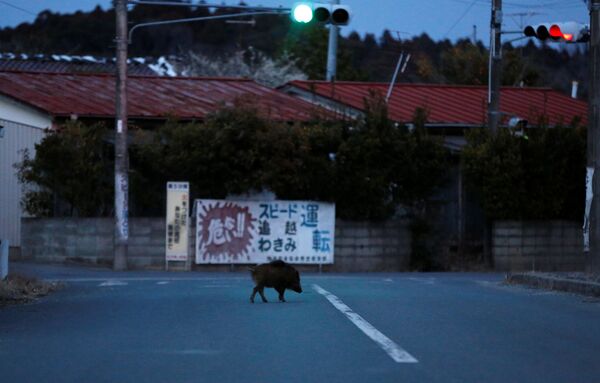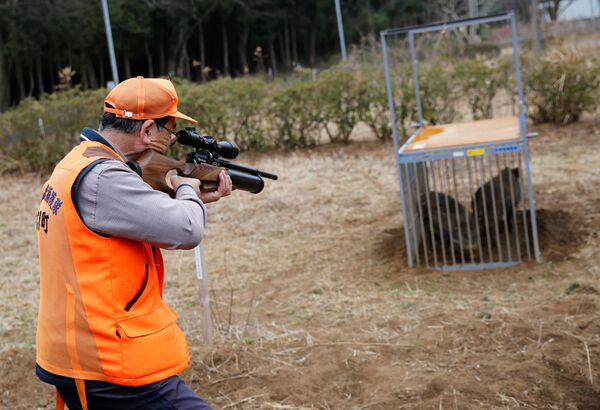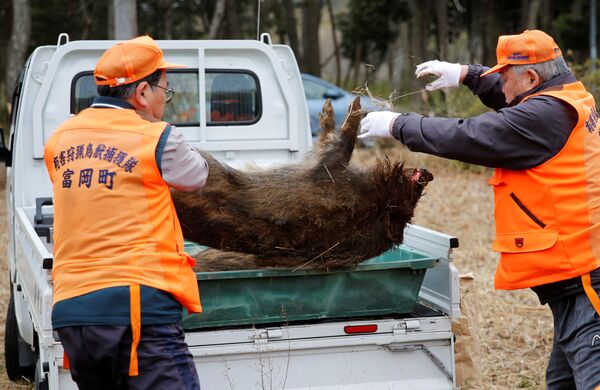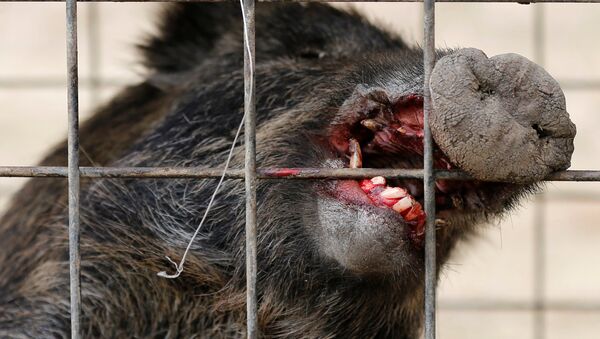In the seaside town of Namie, just 2.5 miles from the nuclear plant, the boars roamed empty streets in search of food. When the humans tried to return, they were met with bloody-toothed wild pigs weighing, on average, nearly 200 pounds.

"It is not really clear now which is the master of the town, people or wild boars," said Tamotsu Baba, mayor of Namie. "If we don't get rid of them and turn this into a human-led town, the situation will get even wilder and uninhabitable."

Although the Namie evacuation order has been lifted, over half of the 21,500 residents have decided not to return. They left the town six years ago, and concerns over high radiation levels remain. Japanese authorities assert, however, that radiation levels in Namie have returned to pre-meltdown levels.

In the neighboring town of Tomioka, teams of hunters place traps baited with rice flour and shoot the boars on sight with air rifles. "After people left, they began coming down from the mountains and now they are not going back," said local hunter Shoichiro Sakamoto to Reuters.

"They found a place that was comfortable. There was plenty of food and no one to come after them."

Japanese sources estimate some 13,000 boars have taken up residence in the exclusion zone. The Fukushima prefectural government is offering a bounty for hunters to "inspire" a culling of the species.
The creatures reproduce quickly, however. The gestation period is only four to five months, with the average litter being four to six piglets. The cute little piggies will become, in just 2 years, fully-grown aggressive omnivores that can run at 25 mph.

There is no evidence that radiation has adversely affected the boars, although two to three generations of boars have lived in the irradiated exclusion zone. "I'm sure officials at all levels are giving some thought to this," said Namie resident Hidezo Sato to Reuters. "Something must be done."


